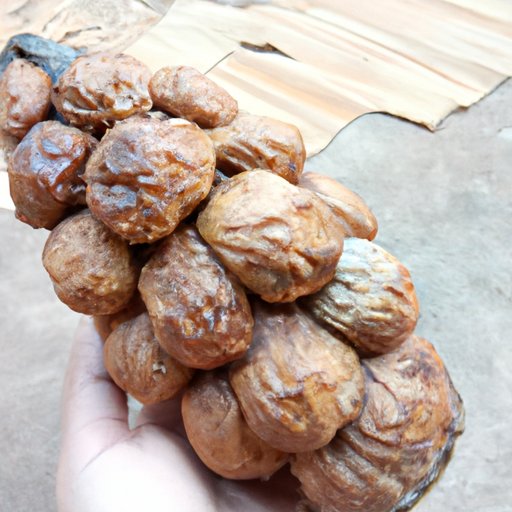I. Introduction
Yaba, also known as “crazy medicine” or “mad drug,” is a highly addictive drug that has become increasingly popular in many parts of Asia and beyond. Made from a combination of methamphetamine and caffeine, yaba is known for its ability to produce a powerful high, but at a steep cost.
The purpose of this article is to provide a comprehensive guide to yaba, its scope and impact on society, and the measures that can be taken to address its spread.
II. Yaba: The Dangerous Drug Sweeping Across Asia
Yaba originated in Thailand in the 1990s and was initially used as an appetite suppressant. Over time, it became popular as a party drug and a stimulant used by people who work long hours, such as truck drivers and laborers. Its use then spread to other parts of Southeast Asia, including Myanmar and Bangladesh, where it has become a major public health problem.
Today, yaba is often used in social contexts, such as at parties and nightclubs, but is also reportedly used by students who are seeking to stay awake and study for exams. The drug is often marketed in colorful pills that are stamped with logos or cartoons to attract young people.
III. Understanding Yaba and Its Devastating Impact on Users
Yaba has a number of physical and psychological effects on users. Physically, it can cause a range of symptoms such as increased heart rate, high blood pressure, and dehydration. Psychologically, it can lead to increased agitation, paranoia, and even psychosis.
Long-term use of yaba can have even more severe consequences, including addiction, cognitive impairment, and dependence. Yaba can also have negative impacts on a person’s personal life and relationships, as well as their career and financial stability.
IV. Yaba Addiction: Signs, Symptoms and Treatment Options
Yaba addiction is a serious and growing problem in many parts of Asia. Addiction can be difficult to overcome, but with careful diagnosis and proper treatment, it is possible.
Signs and symptoms of yaba addiction include increased tolerance, withdrawal symptoms, and a persistent craving for the drug. Treatment options for yaba addiction may include individual and group therapy, support groups, and alternative therapies such as meditation and yoga.
V. From Thailand to Bangladesh: The Story of Yaba Trafficking
The production and trafficking of yaba is a lucrative industry that often involves organized crime syndicates. Yaba is produced in illegal laboratories in Myanmar and other countries, and is smuggled into various markets in Asia and beyond. The drug is often hidden in shipments of everyday consumer goods such as tea or toys, making detection difficult.
In Bangladesh, yaba is a growing problem, with seizures increasing by over 200% in recent years. It is estimated that over 1 million people in Bangladesh are addicted to yaba, and the drug trade has had a significant impact on the country’s economy and social fabric.
VI. The Chemical Makeup of Yaba and Its Effects on the Brain
Yaba is made from a combination of methamphetamine and caffeine, which produce different effects on the brain. Methamphetamine is a potent stimulant that can increase dopamine levels and induce a euphoric high, while caffeine is a mild stimulant that can produce a feeling of alertness and focus.
When combined, the effects of both drugs are amplified and can produce a powerful high that can be addictive. However, the long-term use of yaba can lead to dependence and negative impacts on brain function, including cognitive impairment and damage to the dopaminergic system.
VII. How Yaba Abuse Leads to Social Impacts in Communities and Nations
The social impacts of yaba use are significant and far-reaching. In addition to the health and addiction-related consequences, yaba use can lead to issues such as violent crime, family breakdown, and economic instability.
Communities affected by yaba use may face increased rates of violence, including domestic violence and gang-related crime. The economic costs of yaba use can be substantial, including lost productivity due to addiction and increased healthcare costs.
VIII. Conclusion
Yaba is a dangerous drug that has become a serious problem in many parts of Asia and beyond. Its widespread use and distribution highlights the need for effective prevention and treatment strategies, as well as more extensive public education efforts. By recognizing the scope and impact of the problem, we can work towards a brighter and safer future for all.
If you or someone you know is affected by yaba use, it is important to seek help and support from qualified professionals.
